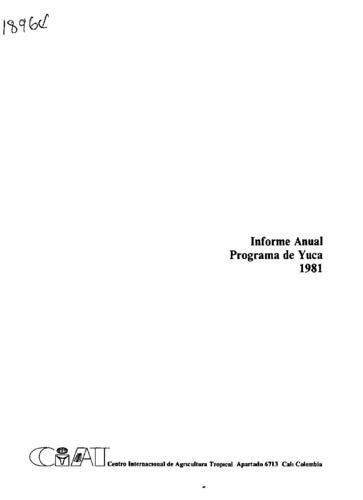Suelos y nutricion de la planta
Abstract
Advances in research of the soil and plant nutrition section of CIAT's Cassava Program in 1981 are given regarding symptoms of Ca and S deficiency, germplasm screening for adaptation to high acidity and/or low P; effect of fertilization (long-term fertility); level and time of K application; effect of nutrient status of planting material on the growth and yield of the crop; external P requirements; fertilizer response as related to soil fertility; and response to mycorrhizal inoculation. Critical levels were 0.27 and 0.3 percent for S and Ca, resp., DM production being severely reduced below these levels. Different var. were grouped according to an adaptation index into 3 categories (highly adapted, adapted, and nonadapted to low-P soils) and according to variation in yield. Those var. with greatest efficiency of P uptake were also more tolerant to acid soils. Annual application of N-P-K increased yields from 20 to 43 t/ha. The application of 168 kg K/ha gave the highest root yield in var. M Ven 77, while the application of 84 kg k/ha increased its starch content. Root yield was closely related to total P content of stakes, reaching a max. at about 15 mgP/stake. Max. external P requirements were calculated to be 0.027 and 0.030 ppm for CMC-40 and M Col 1684, resp. Yield response of several cv. to different levels of N, P, and K application in 10 locations varied according to soil type. Response to mycorrhizal inoculation depends on P content in planting material and existence of native mycorrhizal populations; when rooted plantlets with little P reserves were used, the response was more marked. (CIAT)

